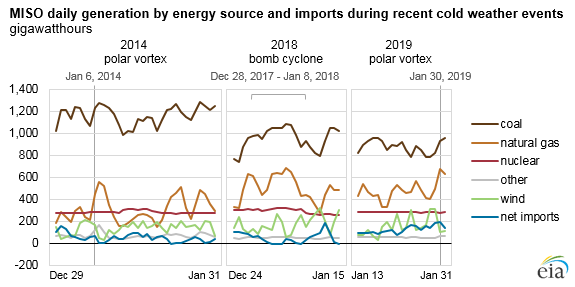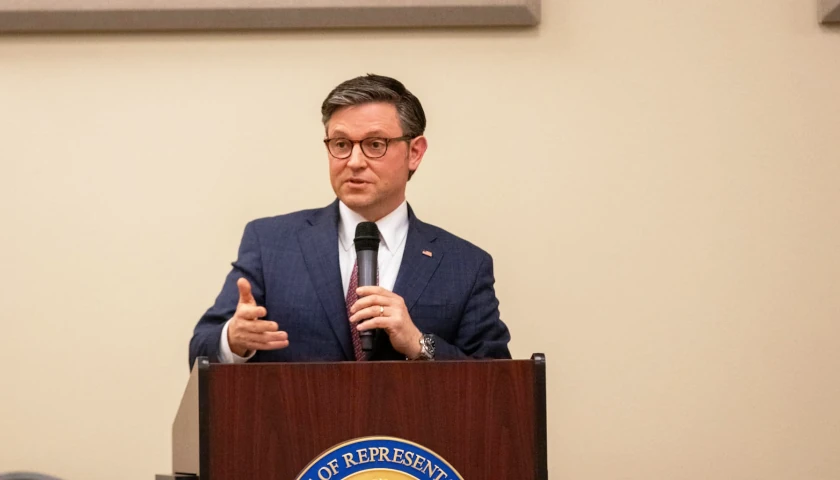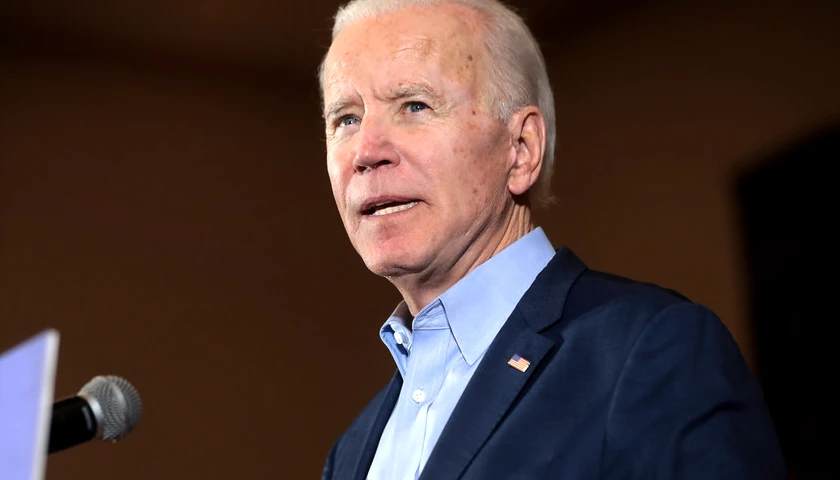by Michael Bastasch
As Congress debates the Green New Deal, which calls for a massive increase in renewable energy use, new reports show wind energy “dropped off” as frigid Arctic air descended on the eastern U.S. earlier this year.
“An earlier than expected drop in wind, primarily caused by cold weather cutoffs, increased risk of insufficiency for morning peak,” according to a report from the Midcontinent Independent System Operator (MISO), which oversees electricity delivery across 15 states.
 The wind power shortfall triggered a “maximum generation event” on the morning of Jan. 30 when temperatures plummeted, MISO reported Wednesday of its handling of the historic cold that settled over the eastern U.S. in late January.
The wind power shortfall triggered a “maximum generation event” on the morning of Jan. 30 when temperatures plummeted, MISO reported Wednesday of its handling of the historic cold that settled over the eastern U.S. in late January.
Unplanned power outages were higher than past polar vortex events, MISO reported, much of it because wind turbines automatically shut off in the cold. Coal and natural gas plants ramped up production to meet the shortfall and keep the lights on.
“This what happens when the government starts mandating and subsidizing inferior energy sources,” Dan Kish, a distinguished senior fellow at the Institute for Energy Research, told The Daily Caller News Foundation.
Kish, a Green New Deal opponent, said the proposal would “double down with more ‘Rainbow Stew’ sources” that “don’t work when you need them the most.”
Kish isn’t alone in his concern. Energy experts for years have been exploring the feasibility of integrating more solar and wind power onto the grid. The Green New Deal brought that debate to the forefront.
While the Green New Deal doesn’t explicitly ban any fuel sources, it does call for achieving “net-zero” emissions within 10 years by “dramatically expanding and upgrading renewable power sources.”
The bill’s main champion, New York Democratic Rep. Alexandria Ocasio-Cortez, said the Green New Deal was about “transitioning to 100 percent renewable energy,” at a press conference introducing the resolution in early February.
Green New Deal supporters say wind and solar are necessary to fight global warming, but critics say increasingly relying on intermittent renewables poses a threat to grid reliability.
The U.S. Energy Information Administration (EIA) released a report Tuesday that detailed how “[w]ind generation dropped off … mainly caused by wind plants reaching their cold weather cutoff thresholds.”

Wind turbines are shut off when temperatures dip below minus 20 degrees Fahrenheit, as happened in the upper Midwest and Great Plains — an area often dubbed the “Saudi Arabia” of wind energy. On top of that, when it gets, say, minus 45 degrees Fahrenheit, there’s not much wind.
EIA said that “wind accounted for an average of 5%, ranging from 5% to 15% on surrounding days” on Jan. 30, while “coal supplied about 41% of MISO’s load and natural gas supplied about 30%.”
The American Wind Energy Association (AWEA) did not respond to TheDCNF’s request for comment, but the group did publish a blog post in February on the polar vortex.
AWEA’s research director Michael Coggin said wind energy’s performance was “strong” during this year’s polar vortex. Coggin said high voltage power lines allowed wind power from the Great Lakes and Mid-Atlantic to send power westward.
– – –
Michael Bastasch is a reporter for the Daily Caller News Foundation. Follow Michael on Twitter.





